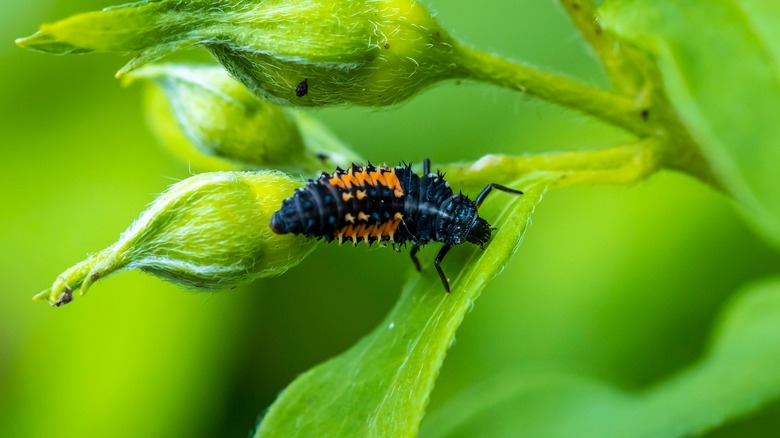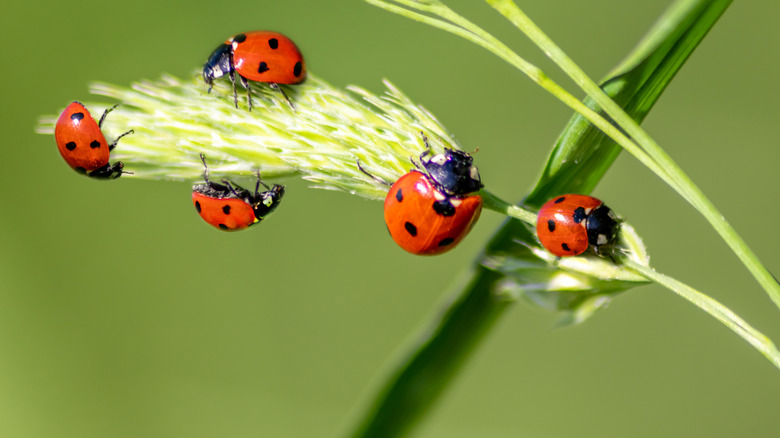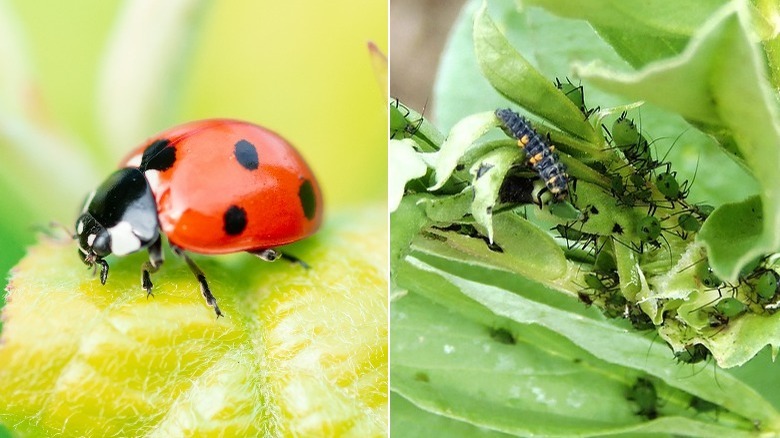Why You Should Consider Using Ladybug Larvae In Your Garden
We may receive a commission on purchases made from links.
Pests are one of the biggest nuisances in gardening, and they can destroy your plants and vegetables quickly once they appear. Luckily, there's an insect that will protect your garden from such harmful bugs. Ladybugs, which are sometimes referred to as lady beetles, prey on insects that commonly eat garden plants. Aphids, which love to eat plants and vegetables and can also spread viruses to them, are a ladybug larva's favorite food. As a result, by attracting ladybugs to your garden or releasing these friendly bugs near your plants, you can cut down on your garden's pest problems naturally.
While mature ladybugs will eat their fair share, the appetite of ladybug larvae is even greater. One ladybug larva can eat upward of 300 aphids during its approximate one-month development. Further, ladybugs lay lots of eggs, sometimes over 1,000 in a few months, which means your garden can have ladybug larvae protecting it in a very short while. Not to mention, beyond aphids, ladybugs also feast on other soft-bodied insects, such as thrips, scales, mites, and white flies, all of which can prove harmful to a garden as well.
How to attract ladybugs to your garden
If you want to inspire ladybugs to visit your garden, growing flat-topped flowers and plants that produce a lot of pollen provides an additional food source for ladybugs, which will help them stick around. Dill, yarrow, angelica, marigold, fennel, sweet asylum, and calendula are all known to attract ladybugs. It's also important to avoid using pesticides. While insecticides will kill aphids harming your garden, they will harm the ladybugs as well. While some pesticides like neem oil won't kill ladybugs, they will eliminate their main source of food, and the adults will leave in search of a better spot to lay their eggs — taking their future larvae with them.
Another great way to keep ladybugs around is by providing a place for them to hibernate in the winter. You can build a ladybug hibernation center by tying stalks of bamboo together, placing it in a pot, and stuffing it with straw. If you wait until spring to clear out dead stems in your garden and yard, you won't disturb any ladybugs that happen to be resting there.
Buying and releasing ladybugs
You can purchase ladybugs if you have trouble attracting them to your garden or yard. Ladybugs can be found for sale on Amazon and in stores like Lowe's, but it's important to make sure you purchase insects native to your area. When you're ready to release your ladybugs, it's also best to do so at dusk and to avoid letting them all go at once, releasing them instead over a span of a few days.
It can be helpful to put ladybugs directly onto the plants that need pest control and to either spray your plants with water or set out a small dish of water for them (and their future hungry larvae). If you do leave a container of water out, be sure to change it out regularly. You can also install a ladybug house, like this one from Amazon, and leave cotton balls soaked with water inside.


